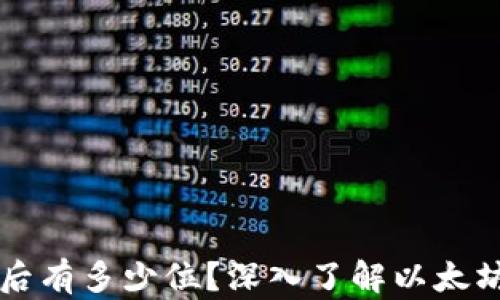以太坊(Ethereum)作为区块链技术的先锋之一,其在数字货币和智能合约领域的应用已经迅速成为世界瞩目的焦点。随着越来越多的人参与到以太坊生态系统中,对于其钱包的使用和操作变得至关重要。在这个过程中,用户经常会碰到一个相对技术性的以太坊钱包的小数点后有多少位?本文将详细探讨这一问题以及与之相关的一些关键概念。

为了理解以太坊钱包的小数点后多少位的问题,首先我们需要了解以太坊的基本单位。以太坊的基本货币单位是以太(Ether),简称ETH。在以太坊网络中,除了ETH本身,用户还常常会接触到一个名为“Gwei”的单位。Gwei是以太坊的重要计量单位,尤其常用于计算交易费用。
以太坊中的1 ETH等于10^9 Gwei,这意味着一个以太币可以被分割成十亿个Gwei。这样的设计使得以太坊系统能够支持精准的交易和费用计算,在进行小额支付时,这一点尤为重要。
在以太坊及其钱包中,ETH的精度可到达小数点后18位。这种精度使得以太坊在进行微交易时能够达成高效率,不论是大额转账还是小额支付,都能在确保准确性的同时,减少资源浪费。这18位的小数点后精度不仅符合以太坊的设计初衷,也为用户提供了极大的方便。
在实际使用中,通常情况下用户在以太坊交易中不会涉及到如此高的精度,因为大部分交易涉及的金额并不需要小数点后18位的精确度。例如,一个用户要转账0.01 ETH,最多只需要到小数点后两到五位的精确度。但是在智能合约、去中心化金融(DeFi)等复杂应用中,了解这些精度是非常有必要的。

以太坊钱包的核心功能是为用户提供一个可存储、发送和接收以太币的地方。以太坊钱包主要分为两类:热钱包和冷钱包。热钱包是在线的,适合平时的频繁交易;而冷钱包是离线的,更加安全,适合长期保存大量以太币。
钱包内每一笔交易都会受到智能合约的验证,这意味着在以太坊区块链上,所有的交易都是公开且透明的。用户可以通过以太坊的钱包地址查阅到所有历史交易记录。在进行交易时,钱包会将用户输入的金额按精度分配,从而确保交易的正确执行。
以太坊钱包小数点18位精度的设计在多个方面影响着交易的流程和行为。首先,在去中心化金融(DeFi)应用中,由于涉及的资金量可能涉及数十亿Gwei,保持这样的精度是至关重要的。其次,在游戏、体育博彩等领域,小数点后精度的高低也影响着用户的体验与满意度。
此外,随着以太坊网络的更新与升级,比如以太坊2.0的推出,关于交易费用的计算和执行效率也将有显著提升,这将使得以太坊钱包在进行高频交易和微交易时更加高效、便捷。
The transaction fees in the Ethereum network are determined based on the amount of gas required to execute a transaction and the gas price (in Gwei). Gas is a measure of computational work, and each type of operation has a different gas requirement. When users initiate a transaction, they set a gas price they are willing to pay, and miners prioritize transactions with higher gas prices to maximize their earnings.
This means that, for users, transaction fees can vary widely based on network congestion and the urgency of their transactions. Understanding how gas fees work is crucial for anyone looking to use Ethereum effectively. During periods of high activity, fees can become quite steep, leading users to consider their timing and urgency carefully.
Managing your Ethereum wallet and private keys securely is paramount. Private keys are akin to your bank credentials; if they are compromised, anyone can access your funds. To ensure security:
1. Use hardware wallets for cold storage, which store your keys offline significantly reducing risks from online attacks.
2. Enable two-factor authentication (2FA) where possible to add an additional layer of security.
3. Regularly update your wallet software to protect against vulnerabilities, and be wary of phishing attempts that aim to trick you into revealing your private keys.
By employing these practices, you can help safeguard your digital assets in the Ethereum ecosystem.
Understanding the relationship and conversion between ETH and Gwei is essential for anyone participating in transactions within the Ethereum network. One Ether (ETH) is equivalent to 1,000,000,000 Gwei (10^9). This relationship allows for extremely granular transaction fees that can be adjusted based on current network conditions.
For practical purposes, when initiating transactions, users often see gas prices listed in Gwei. Therefore, a user needs to be familiar with converting these values to ETH when they consider transaction costs. Various online calculators and wallet interfaces can help with this conversion to facilitate easier transaction decisions.
The rise of high-frequency trading and micropayments in the Ethereum ecosystem represents a significant shift in how blockchain can be leveraged for financial applications. As technology advances, the need for faster and more efficient transaction processes is increasingly important. Users need quick confirmation of transactions with minimal fees, which can challenge the existing infrastructure.
Ethereum 2.0 aims to address this with improved scalability and throughput, allowing for possibly thousands of transactions per second compared to the current limitations. This development is expected to make the Ethereum network more suitable for both high-frequency trading and microtransactions, ultimately expanding its use cases and further integrating blockchain into everyday commerce.
通过对以太坊钱包小数点后位数及其相关概念的深入探讨,我们了解到以太坊不仅在技术上具备了高度的灵活性和精度,其钱包的操作和费用结构也为用户提供了多样化的选择和可能性。随着以太坊网络的发展,我们相信这一领域将会迎来更多的创新与机会,为全球用户带来更加便捷与安全的数字货币体验。